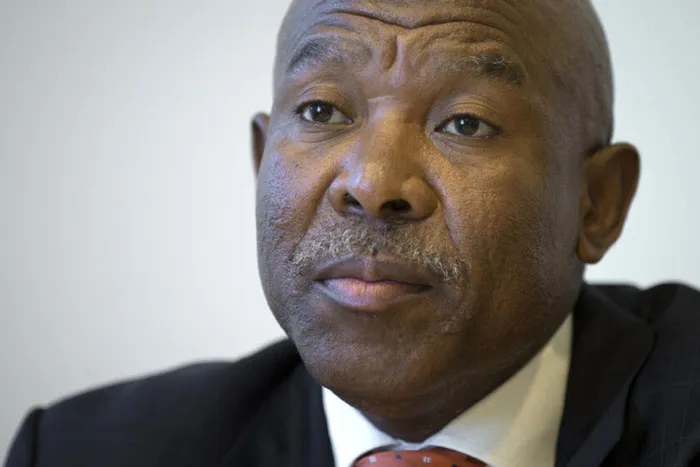SARB’s Kganyago stirs controversy with rate remarks impact on the unemployed

Lesetja Kganyago, Governor of the South African Reserve Bank. File photo
SOUTH African Reserve Bank (SARB) Governor Lesetja Kganyago has left public opinion divided over his remarks about the impact of rising interest rates on unemployed people.
The SARB’s Monetary Policy Committee has implemented 10 consecutive interest rate hikes since the hiking cycle started in November 2021, bringing the repurchase rate to a 14-year high of 8.25% in order to tame consumer inflation.
Inflation targeting is a framework in which the SARB uses monetary policy tools, especially the control of short-term interest rates, to keep inflation in line with a given target range of 3% to 6% per annum.
Speaking at the PSG Think Big Series last week, Kganyago said that high interest rates, which the SARB has been raising to curb inflation, did not affect unemployed people because they did not qualify to raise debt.
Kganyago was responding to a member of the audience, who challenged the SARB’s continuous monetary policy tightening as that which was grounded in First World thinking and did not take into account the country’s prevailing economic conditions.
He also wanted to know whether the SARB had a “margin” it considered to cushion the poor when raising rates on the back of high unemployment, or whether the mandate was strictly to keep inflation down regardless of who was affected.
In his response, Kganyago defended the bank’s restrictive monetary policy stance, saying that inflation-targeting was the best available mechanism to help the poor as it gradually slowed down the increasing prices of goods.
“There is no doubt that high interest rates affect the borrowers. The unemployed that you talk about, nobody lends them money. They are unemployed. So the interest rates don’t even enter the equation for them,” Kganyago said.
“But inflation affects all of us. Poor, rich, inflation affects all of us. Even if you’re unemployed, inflation is going to affect you. So we are going to have to deal with inflation.”
Kganyago also took issue with the assertion that the SARB’s inflation-targeting approach was of First World countries.
“There are more inflation-targeting countries in the developing world, they exceed the number of developed countries. So it's not a First World issue. The only thing is that we have got different inflation targets,” he said.
“The developed world targets 2%. In South Africa we set it at 3% to 6% with a preference at 4.5%. The Indians target something like 3% to 5%, and the Brazilians target 3%. So you can look at the spectrum of the developing world.
“Actually, many of them have got inflation targets that are lower than we have. We sort of look like an outlier with a wider inflation target compared to countries that are our peers.”
Kganyago’s views have polarised opinions in public discussions on social media, with some saying he was detached from reality and seemed to not understand the transmission mechanism of rate hikes.
Some pointed to the 2020 research report by the Black Sash and the London School of Economics, which revealed that beneficiaries of social grants have become a lucrative market for formal lenders who charge them exorbitant interests.
Millions of social grant recipients in South Africa are mainly unemployed people who may use their grants to supplement their household income in the informal sector.
Economist Redge Nkosi, the founder and executive director of monetary, banking and macroeconomic policy research and advocacy organisation First Source Money, said on Friday that Kganyago was wrong to assume that interest rates did not affect the poor.
Nkosi said Kganyago had given a “very disingenuous answer” to a legitimate question by trying to be technical, yet failed to link the increase in the other prices with the increase in the interest rates.
He said the difficulty lay in Kganyago not recognising or understanding that the interest rate was an administered price that affected borrowers and non-borrowers alike, and that inflation itself included the price of rates, as that price was factored into other prices in the economy.
“Interest rates are administered prices, meaning a price that is controlled by some authority. Interest rate is the most pervasive administered price ever, affecting virtually all of society,” Nkosi said.
“A rate hike, like most other administered prices, filters down to everyone. And to talk about inflation affecting everyone as if inflation is not the general increase in prices is ridiculous and misguided.
“Only the dead do not get affected by the increase in prices. The poor are not dead people who do not get affected by the increase in the administered price, which filters to all people in an economy.
“To suggest that some of the living do not get affected by an increase or even decrease of such a pervasive price must be new economics,” Nkosi said.
However, Momentum Investments economist Sanisha Packirisamy said the public should be careful of confusing the mandate of monetary policy and fiscal policy.
Packirisamy said while monetary policy did take employment into account via its emphasis on balanced and sustainable growth, a large portion of the unemployment rate was structural in nature. Thus structural reforms were also needed to provide a more conducive environment.
“The governor is correct in saying that the direct impact of a higher interest rate environment on lower-income households is negligible given that lower-income earners have very little exposure to prime-linked debt,” Packirisamy said.
“In relation to funding costs for firms, there is a gap between the repo rate set by the SARB and the prime lending rate which adds to the cost of financing for both households and corporations. Addressing this gap could come a long way in reducing financing costs.
“In a nutshell, monetary policy does have a role to play, but issues of fiscal dominance can force the hand of monetary authorities to keep policy restrictive for longer to stave off inflationary pressures in the economy.”
BUSINESS REPORT